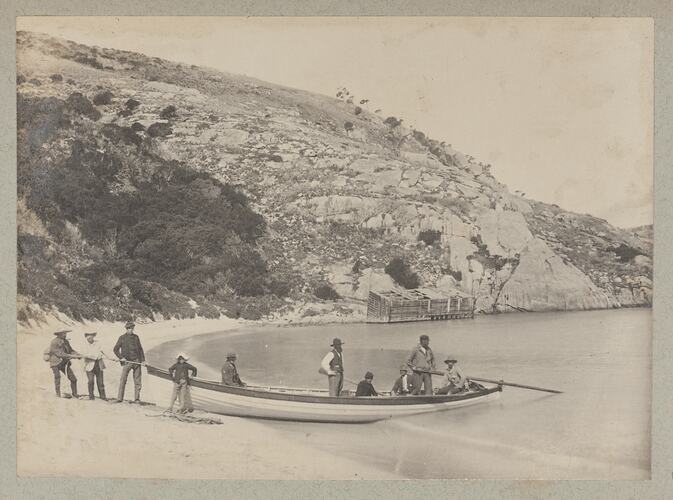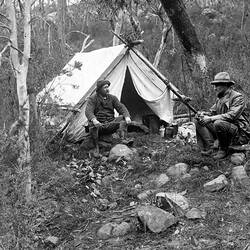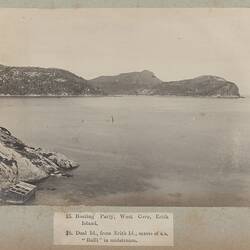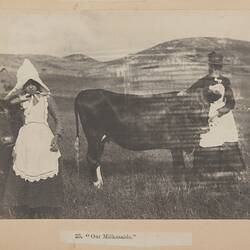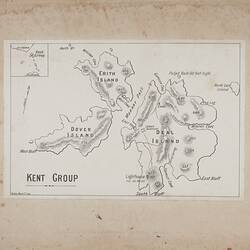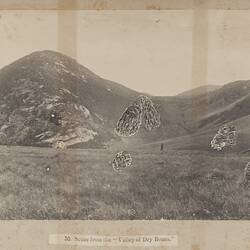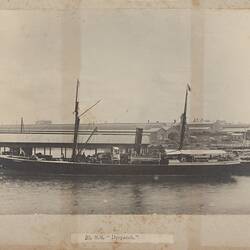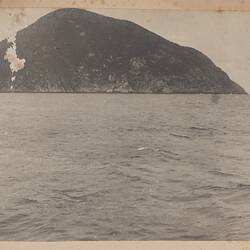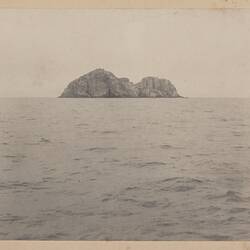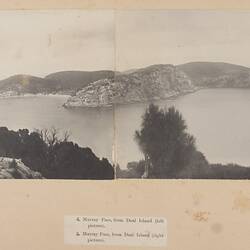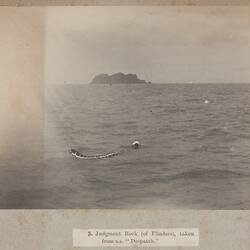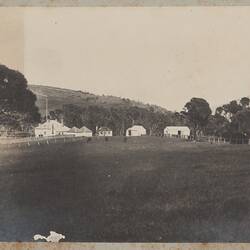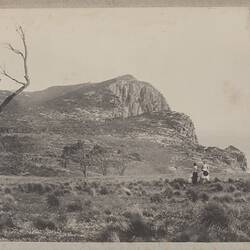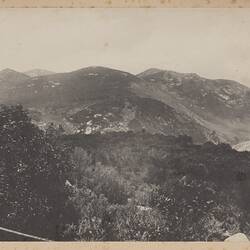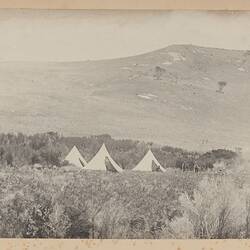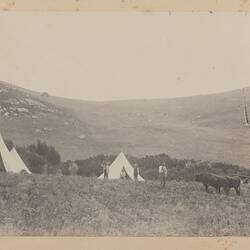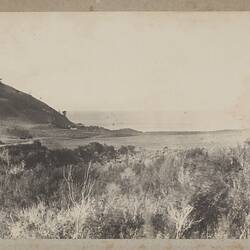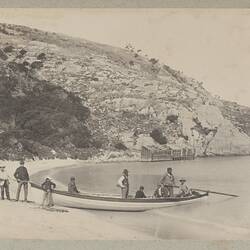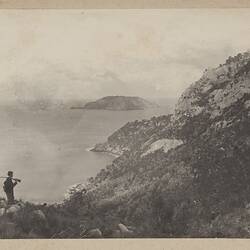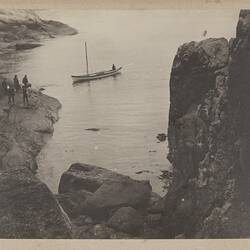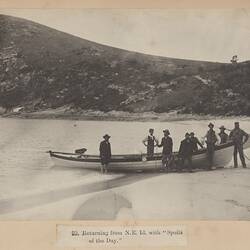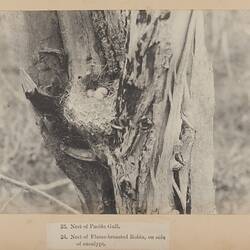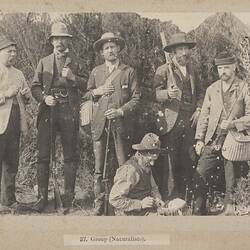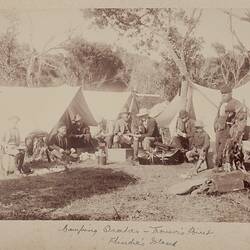THE FIELD NATURALISTS' EXPEDITION TO KENT GROUP
INTERESTING RESEARCHES (BY A SPECIAL CORRESPONDENT)
About 52 miles east by south from Wilson's Promontory is situated the Kent Group, which is about 200 miles from Melbourne. The islands have been prominently mentioned lately in connection with the loss of the Carlisle Castle and the search for the missing steamer Age. The principal islands are Deal, Dover, and Erith, the two latter being separated from the former by Murray Pass, a deep channel about a mile wide. The group also includes two outlying rocky islets - North-East Island about two miles off, and South-West Island between eight and nine miles in the opposite direction (the Judgment Rock of Flinders, and not the two so named on the chart). Furneaux in 1773 was probably the first European to sight the highland of the group before he sheered away towards New Zealand. But in 1798 it was reserved to that illustrious navigator and explorer Flinders to name the group, dedicating it in honour of his friend, Captain William Kent, then in command of the Supply, while the name of Judgment Rock was suggested by its resemblance to an elevated seat.
The field naturalists' party, consisting of Messrs. D. Le Souëf (in charge), A. J. Campbell, F.L.S., T. G. Campbell, C. E. Lane, G. A. Keartland, J. Gabriel, and F. W. Ford, left about 1 p.m. on Saturday, the 15th inst., by Messrs. Huddart, Parker, and Co.'s Port Albert steamer Despatch, which was to make a special detour to Kent Group. At day-break the vessel arrived abreast of Wilson's Promontory, where a lady passenger was landed at the light-house quarters. Captain Norrie then stood over towards Rodondo to enable the party to take a photograph of that remarkable cone-shaped islet, which stands 1,150ft. above sea level, and which is a conspicuous landmark for mariners navigating that portion of the straits. The course thence was 46 miles to Kent Group. En route instantaneous photographs were taken of Devil's Tower, and by way of a strange couplet, Judgment Rock. The tower is a naked rock about 350ft. high, rent and riven. From one aspect daylight can be seen through it. On the summit are huge loose boulders, in one place so piled as to represent the profile of a gigantic human face.
The group is now well in sight, and shortly before noon the Despatch's whistle made the high hills on either side of Murray Pass resound again. The principal lighthouse-keeper, Mr. Charles Brown, was soon off, and by his boat and with the assistance of the steamer's, the party were safely landed in the little securely sheltered East Cove, after a most favourable run down. Leaving our baggage, &c., upon the beach, a slight ascent brought us to the lower light quarters (those of the principal light-keeper), nestling amongst she-oaks, where the sward was prettily decorated with wild white daisies. We elected to pitch our camp about a mile from the quarters on Swampy Creek, close to Garden Cove, the site being well sheltered, firstly by ti-tree and other scrub, then by surrounding hills, one of which overshadowed our camp at an altitude of nearly 500ft., while running water and firewood were in abundance. A team of 12 fat and sleek bullocks was then brought into requisition to remove our tents and luggage from the beach to the camping spot. By sundown everything was in camp trim.
On Monday morning the ball was fairly opened by the members dispersing themselves over the island collecting. The chief point of scientific interest to be solved was whether the group, by the intermediate geographical position, was Victorian or Tasmanian. Birds, eggs, and plants were soon gathered, which proved that honours were divided in some instances, while the evidence as a whole, as in the case of King Island, went to prove that Kent Group formed part of Tasmania at a later period than when the whole (Tasmania and Islands) was connected with the main land. The largest, Deal Island, is about four miles long by about two miles across in its narrowest part, and is easily described as a cluster of about a score of peaks varying from 500ft. to 950ft. above the level of the sea, clothed with thick scrub, chiefly a small eucalyptus (a dwarf variety), sheoak (Casuarina quadrivalvis), acacias, ti-tree (Melaleuca), Oyster Bay pine (Callistris), &c., with intervening grassy valleys. Dover and Erith, lying to the west-ward, are of similar nature to Deal Island, but not quite to scrubby.
The lighthouse, which was erected as far back as the early forties, is 45ft. high, and is built of the island's stone (granite) upon the island's highest part of Deal Island, at a height of 957 ft., and on the principle that a house built upon a hill cannot be hid, so the light is visible from a ship's deck in every direction for 36 miles. But from this elevated position of portions of the Victorian coast, notably Wilson's Promontory and Flinders Island, the light may be seen in fine weather over 50 miles. The assistant keepers' dwellings are near the lighthouse, a mile or more from the principal keeper's, which is connected by means of telephone. One fine day from the lighthouse tower we obtain a splendid sight. A bird's eye view of the group is at our feet - scrubby knolls, grassy vales, encircled by the ocean washing the great bold granite bluffs, and entering here and there little sandy coves. Away homeward is the low land of Hogan Group; on the horizon appear the principal peaks of Curtis and Rodondo, with the minor rock of Devil's Tower, Sugarloaf, and others; while beyond in the hazy distance are mountain forms behind Wilson's Promontory. Turning and looking in the opposite direction we plainly see the Sisters, two islands between 30 and 40 miles off, with the bolder portions of Flinders Island trending away south-ward past the Hummocks. The sea is calm, the Sisters and Flinders are dressed in soft variegated tints of grey-ish blue and drab, while above there appear strata of clouds in singularly magnificent form. It was patent to us that all these abrupt pinnacles of land, including the one upon which we stood, were nothing more than the peaks of what was once a mighty ancient Cordilleras, portions of which now traverse the eastern part of Australia, re-appearing in Tasmania, and finally dipping into the Great Southern Ocean at Mount Wellington. Some difference of opinion exists among geologists whether the island in Bass's Straits afford evidence of subsidence or other-wise. On Kent Group we could find no evidence of gradual upheaval. On the contrary, on Deal Island, especially on the east portion, near Wintry Cove, we found undoubted evidence of subsidence in a series of landslips, one of which was very recent, forming a valley of chasms perhaps half a mile long. Again, at Squally Cove, there is a grassy slope; above on the hills on either hand grow stunted scrub amongst uncovered boulders. In the centre of the valley a spring (we called it Ferny Spring) occurs, which enters the ocean about 250 yards below, and which waters a small patch of no less than six varieties of ferns, including two kinds of tree-ferns common to both Victoria and Tasmania, but in very stunted form, like those we sometimes see struggling for existence placed in the verandahs of dwellings. While there we did not stretch our imagination to believe we were standing at the head of what was a once gorgeous fern gully that existed ages upon ages ago upon mountains probably as high as Mount Kosciusko, and that this now isolated and exposed group of ferns was simply an exemplifications of the survival of the fittest. With regard to the other flora of the islands we collected about 250 plants, which been submitted to Baron von Müeller for identification and remarks. The most striking flowering plants gathered were a white variety of the straw-flower, and the common yet beautiful light-purplish Candollea. A graceful red heath or epacris adorned the scrub, attaining to a perfect bush in places, with a stem nearly as thick as one's wrist. The gum trees were attacked in a most singular fashion by an insect that lived in little dwellings in barnacle-like clusters upon the leaves, and resembling tempting bunches of red currants. The sheoaks flourish on the more exposed sides of the islands. During the cattle trade between Port Albert and Hobart Town, 1842-1866, wind-bound vessels frequently put in to the group to replenish fodder with the acrid juicy foliage of the she-oaks. A relict of these bygone days is erected near our camp, in the form of a plain hard wooden cross, with simple leaden letters nailed on in fashion thus - J.S., Sept. 30, 1849, in memory of the death of a passenger, it is said, of one of the cattle vessels.
Formerly wallaby existed upon Kent Group, but they have long since been exterminated by hunters. There were probably two species. In the exposed faces caused by the landslips at from 3ft. to 15ft. below the surface we found a quantity of old animal bones in a fair state of preservation. Many were collected, including an almost complete skull. They were found in a brown, coloured subsoil, with an admixture of limestone pebbles. Professor M'Coy has kindly consented to offer an opinion after he has thoroughly examined the bones. The exact place where the remains were found is near Wintry Cove, on the east coast. We called it the 'valley of dry bones'. Several opossums were captured, and retained for the Zoological-gardens. They appeared to be the grey mountain opossum of Gippsland, exhibiting a somewhat local variation. A singular part of their economy is that they live in the grass or scrub, perhaps for the significant reason that there are no hollow trees to resort to. Although Hogan Group, to the north of us, is infested with large copper-headed snakes, on Kent Group we only found the little whip snake of Tasmania and Victoria. The blue-tongued and other lizards were also captured.
The birds were decidedly interesting, and contributed greatly to the history of the islands. There were 13 species of water and sea fowl, all of course common to both sides of the Straits; but of the 34 species of land birds (skins were obtained of the majority) two, the lunulated honey-eater and the white-fronted bush-tit (Sericornis) are un-doubtedly Victorian, as against six or seven, as far as we could judge before critical examination, Tasmanian varieties, namely sooty crow-shrike, a Graucalus or cuckoo shrike, grey-tailed thickhead, Tasmanian fantail, ground thrush, brown-tailed tit, and the yellow-bellied parakeet, the remainder of the 34 being common to both Victoria and Tasmania, although in such cases as the allied diamond-bird, olivaceous thickhead, and fire-tailed finch. Tasmania is decidedly their stronghold. Eggs were taken of six varieties of sea-birds, including the rare and beautiful dove-like blue petrel (Prion) and six of seven land-birds. A few European sparrows have found their way to the group, no doubt driven thither from Victoria by one of the strong N.W. gales, which are not infrequent. This may in a measure account for the presence of the two Victorian birds, the honey-eater and the scrub-tit. Fish were plentiful, and to be had for the taking, consequently we were never without fresh food. They were easily caught off the rocks by line, and eels from Swampy Creek. But when the seine was cast in the sandy coves we caught as much as we could conveniently carry away of trevalla (examples weighing over 3lb.), skip-jacks, salmon, mullet (two kinds) chiefly, with specimens of garfish, barracouta, &c A considerable portion of two days was devoted to dredging for polyzoa. Several very interesting species were obtained in Murray Pass, as well as from outside, and possibly, on examination, some may be found to be new amongst them. There was a remarkable absence of algae and sponges.
The expedition was ably assisted by the lighthouse-keepers, especially Mr. Brown and his sons. Mr. Brown had received instructions, through the kindness of the Marine Board, Hobart, to render us every assistance, and right well did he carry out the spirit as well as the letter of these instructions. Although we took them somewhat un-awares (they did not expect us till later on), we would like to testify to tidiness, cleanliness, and apparent good order of the lighthouse and quarters, and to the good feeling and cheerfulness existing among the keepers and their families in their decidedly isolated position. For dredging operations we desired to consult a chart, but were surprised that one of the locality did not exist on the station. In case of accident to the lighthouse or other emer-gency it may be found useful to navigate to the nearest place for assistance. A compass also would be useful. The direction of the wind has to be officially logged daily, which, of course, is now only done approximately for the want of a proper instrument.
After 11 days' sojourn upon the group, the expedition returned to Melbourne on Thursday evening after a thoroughly enjoyable and most instructive outing. The weather throughout was superbly fine, excepting one wet day. About three dozen views characteristic of the islands were photographed.
More Information
-
Keywords
-
Authors
-
Contributors
-
Article types
